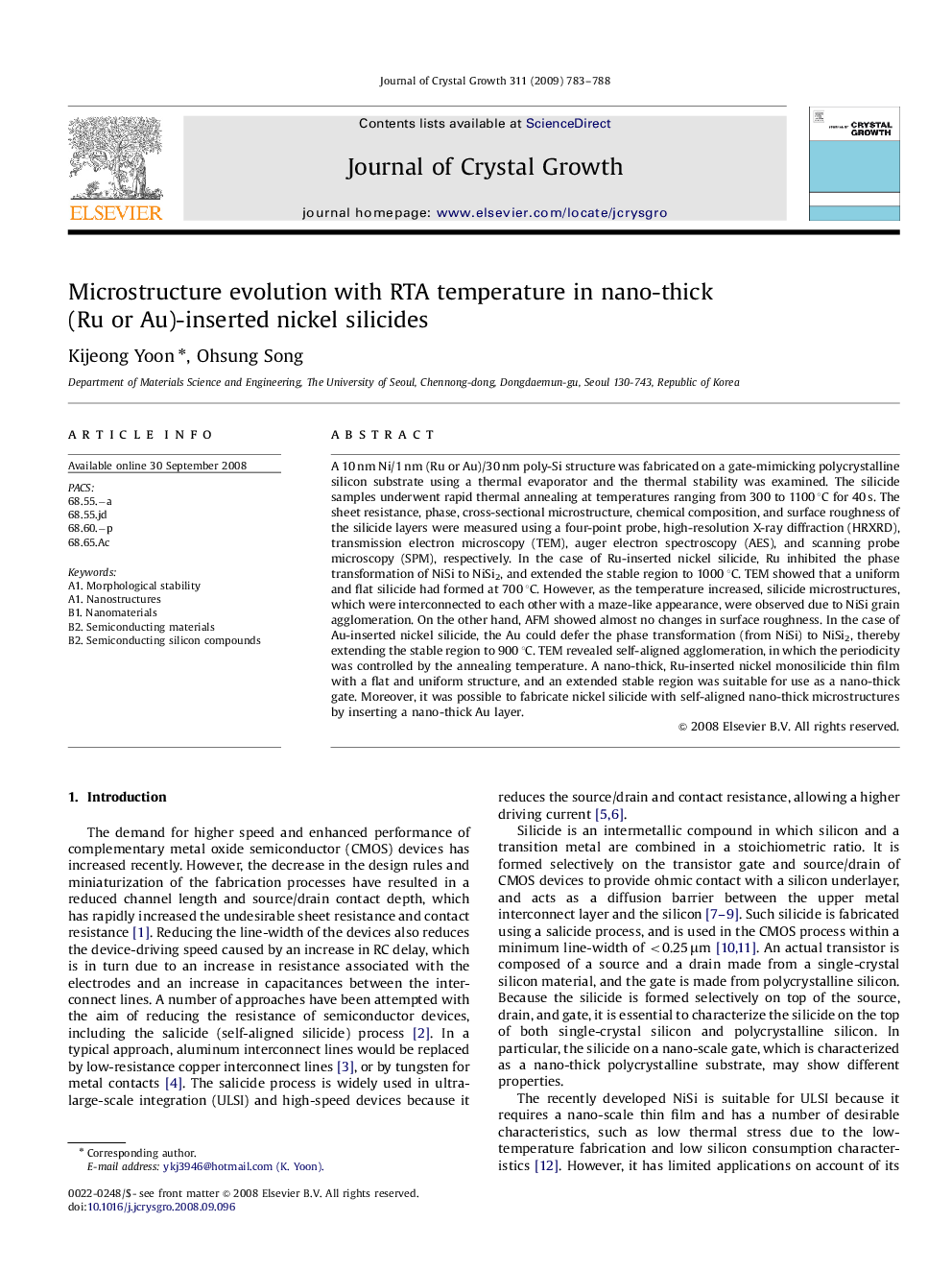| Article ID | Journal | Published Year | Pages | File Type |
|---|---|---|---|---|
| 1793742 | Journal of Crystal Growth | 2009 | 6 Pages |
Abstract
A 10 nm Ni/1 nm (Ru or Au)/30 nm poly-Si structure was fabricated on a gate-mimicking polycrystalline silicon substrate using a thermal evaporator and the thermal stability was examined. The silicide samples underwent rapid thermal annealing at temperatures ranging from 300 to 1100 °C for 40 s. The sheet resistance, phase, cross-sectional microstructure, chemical composition, and surface roughness of the silicide layers were measured using a four-point probe, high-resolution X-ray diffraction (HRXRD), transmission electron microscopy (TEM), auger electron spectroscopy (AES), and scanning probe microscopy (SPM), respectively. In the case of Ru-inserted nickel silicide, Ru inhibited the phase transformation of NiSi to NiSi2, and extended the stable region to 1000 °C. TEM showed that a uniform and flat silicide had formed at 700 °C. However, as the temperature increased, silicide microstructures, which were interconnected to each other with a maze-like appearance, were observed due to NiSi grain agglomeration. On the other hand, AFM showed almost no changes in surface roughness. In the case of Au-inserted nickel silicide, the Au could defer the phase transformation (from NiSi) to NiSi2, thereby extending the stable region to 900 °C. TEM revealed self-aligned agglomeration, in which the periodicity was controlled by the annealing temperature. A nano-thick, Ru-inserted nickel monosilicide thin film with a flat and uniform structure, and an extended stable region was suitable for use as a nano-thick gate. Moreover, it was possible to fabricate nickel silicide with self-aligned nano-thick microstructures by inserting a nano-thick Au layer.
Keywords
Related Topics
Physical Sciences and Engineering
Physics and Astronomy
Condensed Matter Physics
Authors
Kijeong Yoon, Ohsung Song,
